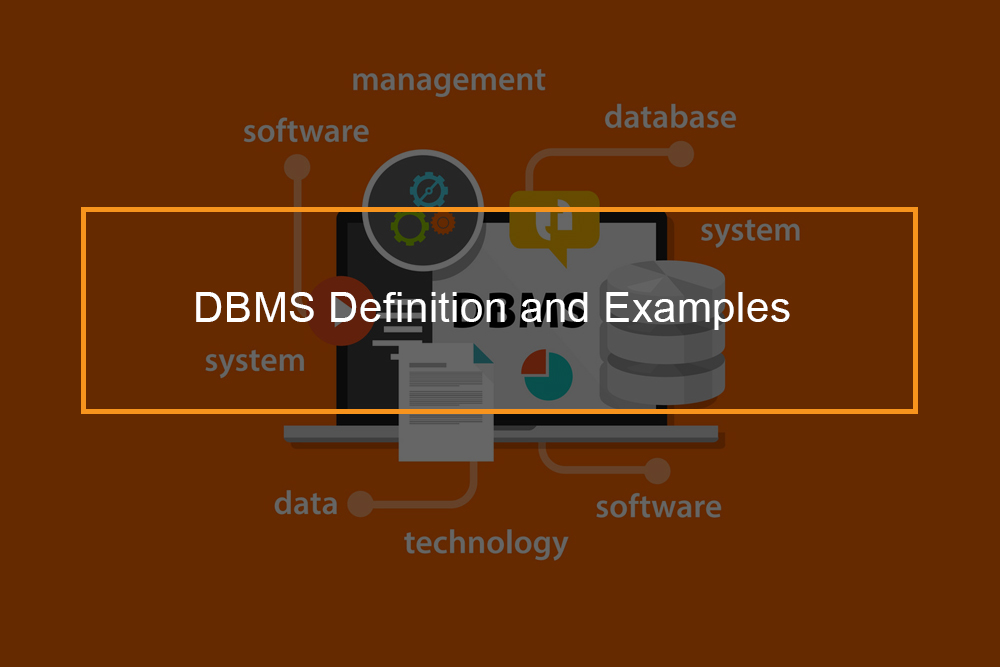Unit Testing Best Practices and Techniques
What Is Unit Testing? Unit testing: It is a type of software testing that examines individual units or components. The main goal is to ensure that each unit of software code works as intended. Software developers carry out unit testing throughout an application’s development (coding) phase. Unit tests are used to isolate a piece of code and confirm that it is working properly. A unit is defined as a single function, method, process, module, or object. In the SDLC, STLC, and V Model, unit testing is the initial level of testing performed before integration testing. Unit testing is a type of white box testing that is frequently performed by programmers. Unit testing is also done by QA engineers due to time constraints or developers’ aversion to testing in the real world.
In this article, you will learn:
- Why Unit Testing?
- How to do Unit Testing
- Unit Testing Techniques
- Unit Test Example: Mock Objects
- What Do Unit Tests Look Like?
- Who Should Create The Unit Test Then?
- What Can I Do With Unit Tests?
- Test-Driven Development
- Checking Your Work
- Code Documentation
- Danger Zone
- Unit Testing Tools
- Test-Driven Development (TDD) & Unit Testing
- Unit Testing Myth
- Unit Testing Advantage
- Unit Testing Disadvantages
- Unit Testing Best Practices
- What is unit testing QA?
- Quality Assurance in Software Testing
Why Unit Testing?

Software developers want to save time by implementing limited unit testing, this is a misconception because insufficient unit testing leads to significant costs for defect correction during System Testing, Integration Testing, and Beta Testing after the program has been built. Unit testing saves time and money in the long run if efficient unit testing is done early in the development process. The following are the primary reasons for performing unit testing in software development:
Acceptance Testing
↑
System Testing
↑
Integration Testing
↑
Unit Testing
-
- By identifying defects early in the development cycle, unit tests save time and money.
- It helps developers understand the testing code base and allows them to make quick changes.
- Good unit tests serve as documentation for a project.
- Unit tests aid code reuse. Users should move their code and tests to their new project. Make changes to the code until the tests pass.
How To Do Unit Testing

UnitTest is a framework developers utilize to create automated test cases for unit testing. As part of Unit Testing, developers write a section of code to test a specific function in a software application. Software developers can also isolate this function to test it more completely, identifying any unnecessary dependencies between it and other units, which can subsequently be deleted.
There are two forms of unit testing.
- Manual
- Automated
Despite unit testing being commonly automated, it can also be performed manually. Although there is no preference for one over the other in software engineering, automation is preferred. In a manual approach of unit testing, a step-by-step instructional paper might be employed.
The following is based on the automated method:
A programmer writes a section of code only for the purpose of testing a function. They will comment out and finally remove the test code after the program is deployed.
- A developer might be able to isolate the function in order to completely test it. This is a more comprehensive unit testing method that involves copying and pasting code into the testing environment instead of the natural one. Isolating the code helps identify unnecessary dependencies between the code under test and other units or data spaces in the product. These dependencies can then be dismantled.
- To create automated test cases, several programmers utilize the Unit test Framework. The developer utilizes an automation framework to code criteria into the test to ensure correct code. The framework logs failing test cases (test fails) while being executed. Many frameworks will automatically highlight and report these failed test cases in a summary format. The unit test framework may halt subsequent testing depending on the severity of a failure.
- The Unit Testing workflow is as follows:
- Create test cases first.
- Examine/Revise
- Establish a baseline
- Carry out the test cases.
Unit Testing Techniques

What are the methods of unit testing?
Unit testing techniques are divided into three broad categories:

| Black-box testing | Black-box testing involves testing the user interface and input and output |
| White box testing: | White box testing involves testing the software application’s functional behavior; |
| Gray-box testing | Gray box testing involves executing test suites, test methods, test cases, and risk analysis. |
The following are a few of the code coverage strategies used in unit testing:
- Statement Coverage
- Decision Coverage
- Branch Coverage
- Condition Coverage
- Finite State Machine Coverage
Unit Test Example: Mock Object
A mock object is used in unit testing to test pieces of code that aren’t yet part of a complete application—mock objects stand-in for the program’s missing elements. It’s possible that a function requires variables or objects that haven’t been created yet. Mock objects created expressly for unit testing that region of code will be used to account for those in unit testing.
What Do Unit Tests Look Like?

A unit can be a single line of code, a method, or a class, among other things. In general, though, smaller is better. Smaller tests provide a detailed picture of how your code is performing. There is also the practical aspect of testing very small units: your tests may be done faster, like a thousand tests in a second.
Consider the following sample code:
def divide (a, b)
return a/b
end
Using Ruby, those small tests can look something like this:
class smallTest < MiniTest::Unit::testCase
def tiny_test
@a=9
@b=3
assert_equal(3, divider(a, b))
end
end
This scenario is overly simplistic, but it illustrates what I mean when I say little. Small tests can make it more challenging to cross-systems, such as from code to a database or a third-party system. Crossing systems isn’t wrong in and of itself, but it can have implications, such as gradually slowing down your tests. This slipped into the test set at a company where I worked a few years ago. We ended up with hundreds of tests, database setup and teardown scripts, and a test suite that took hours to run.
Who Should Create The Unit Test Then?
Unit testing is mostly included in the programming phase. This is not because programmers are the masters of unit testing; it’s just common sense. The programmer who built the test code will likely know how to get to the bits that can be easily tested and mock objects/fake objects that can’t be reached otherwise. It’s a trade-off in terms of time. Sometimes, after the fact, someone will step in and write tests to assist in building protections while they re-work or further develop that section of the codebase.
What Can I Do With Unit Tests?
Hammers are versatile tools that can be used for a variety of tasks, such as opening car windows or shutting off alarm clocks. They are, however, particularly well suited to driving nails into hard surfaces. Unit tests are comparable. They can accomplish a lot of things, but they should probably limit themselves to a few.
Test-Driven Development (TDD)

Test Driven Development is a programming technique in which a programmer writes a test before writing any production code and then produces the code to pass that test. The idea is that if the programmer gains just a smidgeon of confidence from that initial test, they can feel free to refactor and modify until they have the cleanest code possible. The concept is straightforward, but implementation is difficult, like most simple things. TDD necessitates an entirely different mindset than most people are accustomed to and the perseverance to deal with a steep learning curve.
Checking Your Work
TDD isn’t new, but it’s still primarily for doers at this point. We’re all double-checking our work. After you’ve finished writing the production code, writing unit tests is a more traditional approach, but it’s no less effective. It’s also something you’ll recognize if you’ve ever taken a math class in the last ten years.
The value of unit tests changes a little bit once your work is checked, and it is evident that the code is doing what you think it is doing. Change detection is achieved with tests that can be performed with every build of your product, alerting you when code changes in unexpected ways.
Code Documentation
As indicated by the lack of textual documentation, code documentation is a pain. Unit testing can assist alleviate the documentation burden by promoting better coding approaches and leaving behind bits of code that indicate what your product is doing. Rather than constantly feeding the documentation beast with code changes, you’ll be improving a system of checks that is already working for you.
Danger Zone
There are a few applications of unit testing that you should avoid whenever possible. It is possible to write integration tests that cross system boundaries and interact with databases or third-party systems, but this soon leads to a test suite that takes longer and longer to run as more tests are added. There are numerous test frameworks available that focus on higher-level testing. You might want to look into those other frameworks if you want to test larger chunks of your product at once.
Another troublesome area is end-to-end testing. Getting your system into a precise ‘test ready’ state usually necessitates meticulous ordering, dependencies on other tests, and meticulous preparation. There are multiple tools accessible for this purpose, just as there are for integration testing.
These things are certainly possible using a unit test framework, but they may soon become more work than they are worth.
Unit Testing Tools

What are the best tools for unit testing?
To aid with unit testing, there is a wide variety of automated unit test software available. We’ll give you some samples below:

Jtest
Parasoft Jtest is an IDE plugin that uses an open-source framework (JUnit, mockito, PowerMock, and Spring) to build, scale, and maintain unit tests using guided and one-click actions. It focuses on business logic and develops more relevant test cases by automating the time-consuming components of Unit Testing.

JUnit
JUnit is a tool that initially tests data (test data) before inserting it into a piece of code. It’s a Java programming language tool that’s free to use. Assertions are also supported for identifying test methods.

NUnit
Languages for the internet. It’s an open-source tool for manually writing scripts. It’s a testing framework, and it’s used for everything. Data-driven tests can be run in parallel with NUnit (test runs).

JMockit
It’s a free and open-source testing program. JMockit is a tool for determining code coverage. It aids in the mocking of APIs by recording and verifying syntax. This instrument features line coverage, path coverage, and data coverage.

EMMA
It’s an open-source toolset for evaluating and reporting Java code. Method, line, and basic block coverage types are all supported by EMMA. It’s a Java-based application.

PHPUnit
This testing tool asserts that the system should use pre-defined assertion methods to act in a specified way. It takes little chunks of code known as units and tests each one individually. It’s a PHP language testing tool.
These are a few of the available unit testing tools. There are plenty more, particularly for C and Java, but no matter what language you use, you’ll be able to find a unit testing tool that meets your needs.
Test-Driven Development (TDD) & Unit Testing

When it comes to unit testing, TDD makes extensive use of testing frameworks. To create and design automated unit tests, a unit test framework is used (test automation). TDD does not necessitate the use of unit testing frameworks, but they are essential. The following are some of the advantages of TDD in the field of unit testing:
- Tests are written before writing the code.
- Use testing frameworks to the fullest extent possible.
- The classes of the applications are all put to the test.
- Integration is now feasible quickly and effortlessly.
Unit Testing Myth

- It takes time, and I’m always overworked.
- My coding is impenetrable! Unit tests are unnecessary for me.
Myths are, by definition, erroneous assumptions. Unit testing does speed up development. Integration Testing, programmers believe, it will catch all mistakes and not execute the unit test. Simple errors that could have been identified and corrected quickly in unit tests require a long period of time to trace and fix once the units are combined.
Unit Testing Advantages

- Unit tests provide a fundamental overview of the unit API for developers to discover what function a unit provides and how to use the function.
- Unit testing enables the programmer to rewrite code at a later date while still guaranteeing that the module works correctly (i.e., Regression testing). It is standard practice to write test cases for all functions and methods so that any modifications that cause an issue may be identified and addressed quickly.
- Because of the modular structure of unit testing, we may test parts of the project without having to wait for others to finish.
Unit Testing Disadvantages

- It is unrealistic to expect unit testing to catch every bug in an application program. It is not possible to assess all possible execution routes, even in the most straightforward programs.
- Due to this, it is unable to detect integration or system-wide issues.
Unit testing should be utilized in conjunction with other types of software testing.
Unit Testing Best Practices

- Cases for unit tests should be self-contained. Unit test cases shouldn’t be affected by any upgrades or changes in requirements.
- At any given time, just one code should be tested.
- Use explicit and consistent naming standards for your unit tests.
- Before changing the implementation of any module, double-check that it has a corresponding unit Test Case and that it passes the tests (test passes).
- Any flaws detected during unit testing must be fixed before moving on to the next step of the SDLC.
- Adopt a strategy of “testing as code.” You’ll have to travel through more paths to check for issues the more code you write without testing.
What Is Unit Testing QA?

What is Quality?
Quality is difficult to describe, but it may be summarized as “fit for use or purpose.” It all comes down to meeting the demands and expectations of customers in terms of product functionality, design, reliability, durability, and price.
What is Assurance?
A favorable comment about a product or service that generates trust is known as assurance. It guarantees that the product will work smoothly and in compliance with the requirements. A product or service’s success is nearly a foregone conclusion.
Quality Assurance in Software Testing
Software testing quality assurance (QA) is a technique for ensuring the quality of software goods and services given to clients by a company. Quality assurance is concerned with making the software development process more efficient and effective in reliance with the quality standards established for software products. QA Testing is a popular term for Quality Assurance.
Other Relevant Information on Unit Testing

- Unit testing is a software testing approach used in computer programming to determine whether individual units of source code, sets of one or more computer program modules, as well as control data, usage procedures, and operating procedures—are fit for use.
- To isolate issues that may develop, each test case should be tested individually. To help test a module in isolation, substitutes such as method stubs, dummy objects, fakes, and test harnesses can be utilized.
- Potential problems are identified early in the development process because unit tests warn the development team of a problem before turning the code over to testers or clients.
- Functional testing is a sort of black-box testing based on the specifications of the software component under test. It is a quality assurance (QA) method.
- Debugging: It is the process of identifying and fixing bugs (defects or problems that hinder correct functioning) in computer programs, software, or systems in computer programming and software development.
- A unit in object-oriented programming is frequently a complete interface, such as a class or a single method. One can construct thorough tests for complicated applications by writing tests for the smallest testable parts first, then compound behaviors between them.
- Agile development and testing are becoming increasingly common, and as a result, clever QA/testing teams are keeping up with current development trends.
- Gray-box testing is a type of testing in which the tester is aware of a method’s or unit’s internal operation but not to the same depth as white-box testing.
- Acceptance testing is a procedure for determining whether a specification or contract’s requirements have been met.










